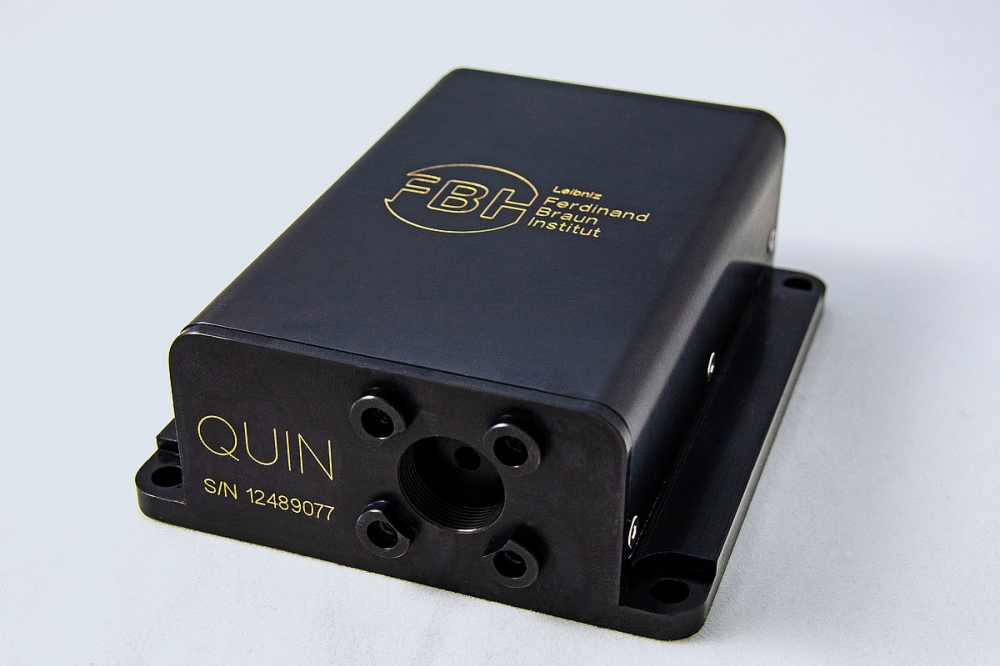FBH to present quantum technology developments at EQTC 2023

The Ferdinand-Braun-Institut (FBH) has announced that it will present current developments and results in quantum technologies, including in integrated photonics, during the European Quantum Technology Conference (EQTC), which will be held in Hanover from 16-20 October 2023. The institute will also exhibit at the accompanying exhibition starting on 17 October.
At EQTC, FBH will showcase its range of services: from integrated photonic devices for quantum communication and information processing, which can be used to precisely control light, to atom-based quantum technologies and integrated quantum sensors. Research and development activities in the field of quantum technologies are carried out in particular by the four Joint Labs in which FBH cooperates with Humboldt-Universität zu Berlin. With these joint research groups, FBH aims to bridge the gap between basic and application-oriented research.
Photonic-integrated circuits for quantum operations
Photonic quantum computing uses light particles to generate and measure photonic resource states. A promising approach is provided by photonic cluster states. Integrated photonic circuits are designed to perform the required quantum operations and generate the photonic cluster states. FBH has developed a photonic platform made from AlGaN heterostructures for electro-optically controlled circuits that are intended for fast and precise on-chip operations and measurements.
To realise computationally intensive resource states, one of the Joint Labs is investigating how to create photonic cluster states with optically active spin defects. The scientists are designing and fabricating nanophotonic spin-photon interfaces in diamond. For example, they recently fabricated a sawfish-like resonator that could generate entangled photons with high efficiency. This has been demonstrated in simulations and is now to be confirmed experimentally.
Quantum laser modules for 3D quantum imaging
For hyperspectral imaging in the mid-infrared range (MIR) and quantum OCT (optical coherence tomography), FBH is developing hybrid-integrated, miniaturised quantum light modules. They are the centrepieces of sensor systems based on "undetected photons." For this purpose, the researchers have developed special laser diodes and micro-optical elements that are integrated into a compact package together with a nonlinear optical crystal. These quantum light modules generate entangled photon pairs that interact in a nonlinear interferometer. FBH says that this makes the technically challenging MIR spectral range accessible, with measurements performed exclusively in the near-infrared range. Due to the entanglement, the institute says that neither detectors nor additional radiation sources are needed in the MIR.
Laser modules and systems for quantum sensor technology
FBH also works on complex and robust laser modules for quantum sensors used on sounding rockets, the International Space Station (ISS), and on satellites. The institute says these modules deliver 500 mW in a single-mode fiber at > 20 % conversion efficiency (electrical to optical) and offer a narrow intrinsic linewidth < 1 kHz, and enable quantum sensing applications in fundamental physics, geo- and environmental physics, and timing and navigation. Core components are diode lasers with wavelengths ranging from 620 to 1180 nm.
FBH laser modules are also used to set up compact quantum sensors and optical frequency references (OFR) for use in space. For example, an ultra-compact autonomous frequency reference based on the D2 transition in rubidium at 780 nm has been demonstrated, which achieves a short-term stability of 1.7 x 10-12 at 1 second. The institute also develops the corresponding systems that are based on the 778 nm two-photon transition and which are candidates for global navigation satellite systems. In addition, they are used in optical calibration and as absolute frequency references in atom-based quantum technology.



































